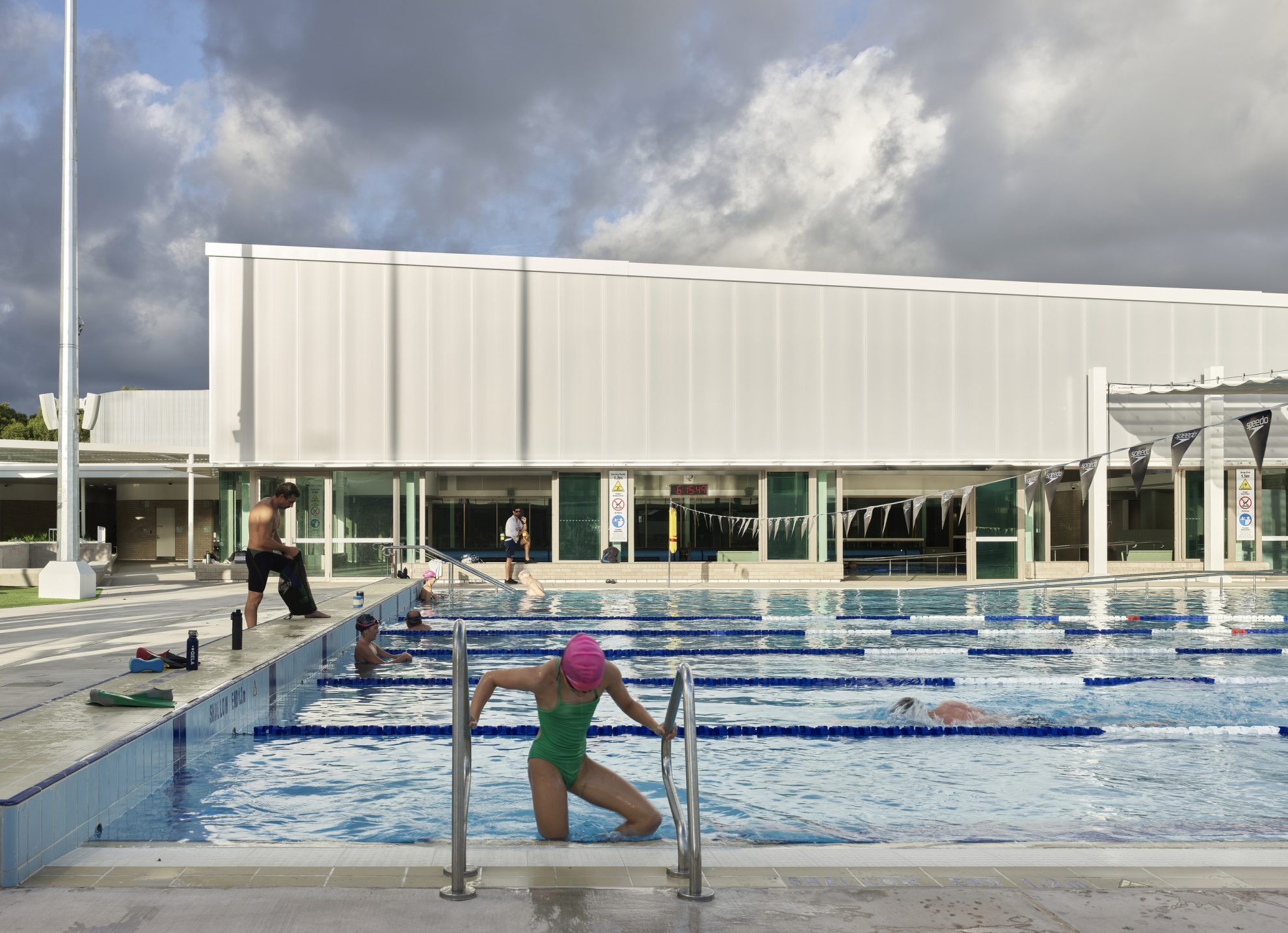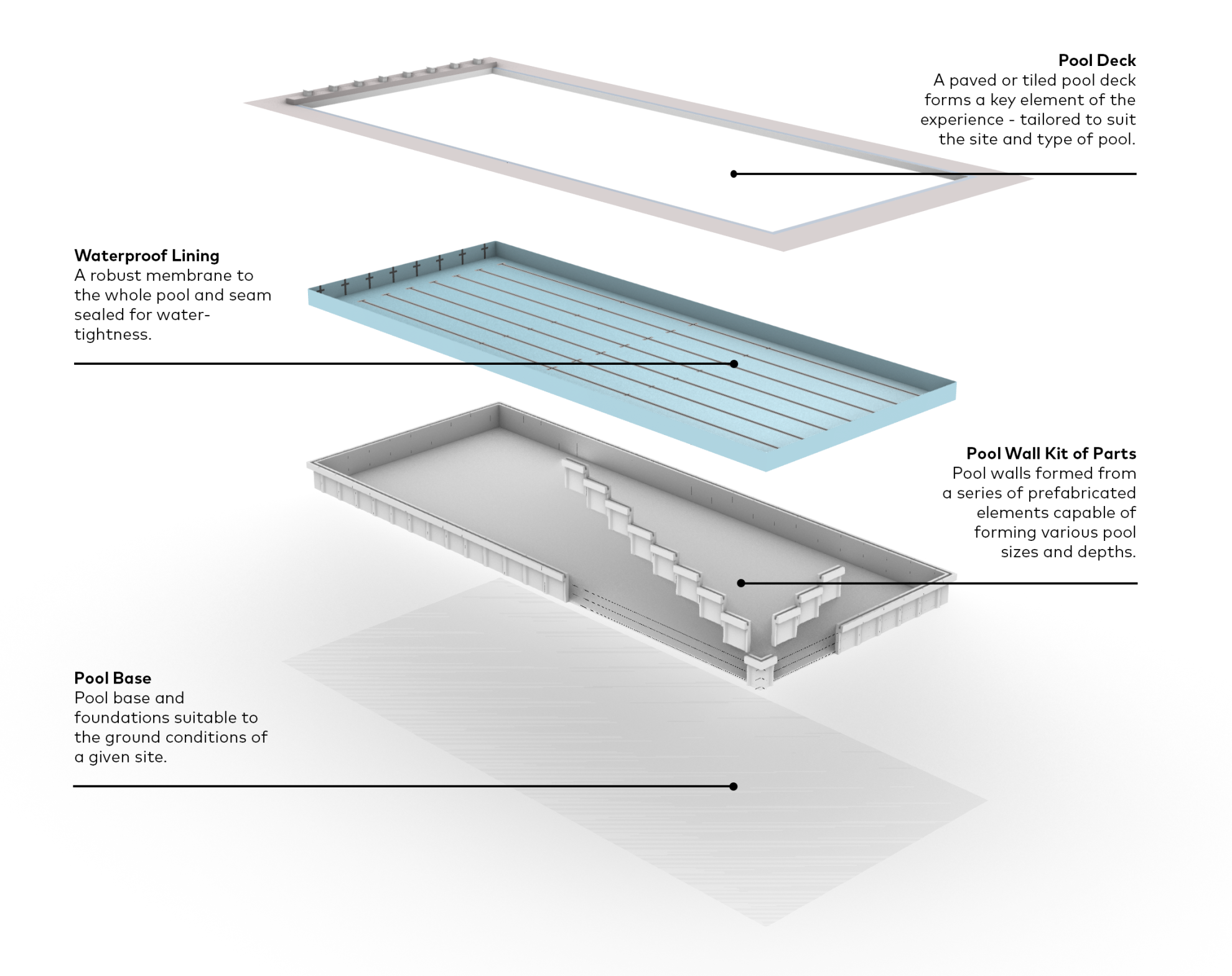Australia’s Public Pools Are Disappearing. Modular Design Could Be the Lifeline

Facing an urgent shortage of public pools, Royal Life Saving NSW and COX propose a modular design pattern book as a faster, more cost-effective way to get communities swimming.
Australia’s public pools are facing a quiet crisis. Royal Life Saving NSW estimates that nearly 40 per cent of the nation’s aquatic facilities will reach end-of-life by 2030. This is not merely an infrastructure problem, but a social, economic and public health issue.
Pools are where communities learn to swim, where young people gather safely, where ageing populations stay active, and where towns build identity and cohesion. Allowing this network of civic infrastructure to decay risks something deeper than lost amenities.
Yet replacing or refurbishing pools the traditional way is proving too slow, too expensive and too inconsistent to meet the scale and urgency of demand.

Above: Palm Beach Aquatic & Community Centre
A fragmented system can’t keep up
The need for accessible, modern and affordable aquatic facilities has never been greater. New communities require new pools, and ageing suburbs need replacements. But today’s project-by-project approach – where each pool is designed, procured and delivered from scratch – cannot respond quickly enough. Equally, a “one-size-fits-all” template ignores the diverse needs of regional towns, outer suburban growth areas and dense urban communities.
With lead times stretching into years and costs escalating across the construction sector, many councils now find themselves paralysed: they know what they need, but cannot afford to deliver it.
A pattern book for the future
There is, however, a viable alternative.
Royal Life Saving NSW and Cox Architecture propose a new model: a pattern book of modular, prefabricated pool and facility components that can be deployed quickly, flexibly and cost-effectively across the state.
This approach – common in health infrastructure, defence, and increasingly in social housing – standardises the systems, engineering and procurement behind each project, while still allowing councils to tailor layouts to local needs. It blends the strength of repeatable design with the sensitivity of community-specific adaptation.
In simple terms: assemble off-site, install on-site, open sooner.

Why modular matters
The advantages are structural as well as financial.
- Prefabricated construction can deliver 10–30% cost savings.
- Repeating a standardised “kit of parts” lowers consultancy costs and reduces procurement time.
- Off-site assembly avoids weather delays, reduces waste and minimises safety risks.
- Robotics and automation can be integrated into the manufacturing process, driving precision and quality.
- Quality control improves lifespan, cutting maintenance and lifecycle costs for councils.
- A modular system enables continuous improvement – each pool becomes better, smarter and more efficient than the last.
Modularity does not mean compromise. Operable floors, accessibility features, modern bulkheads for flexible zoning, and advanced water treatment systems can be integrated seamlessly.
Building a new coalition for community infrastructure
Delivering this shift requires partnership – between state government, councils, industry and the community. It requires shedding outdated assumptions about how civic assets should be designed and delivered.
As Royal Life Saving NSW argues, “Without fresh thinking and sustainable delivery models, many towns and suburbs risk losing access to places that support health, safety, connection and identity.”
COX Director, Alastair Richardson
We need to question old models, old timelines and old cost structures. Modular delivery is not a compromise – it’s a chance to rethink what’s possible.
A vision beyond the concrete
The future of aquatic infrastructure should be:
- More adaptable
- More financially sustainable
- More environmentally responsible
- More closely connected to Country and natural systems
- More accessible and inclusive
- Better able to respond to demographic and climatic change

Above: Stromlo Leisure Centre
The time to act is now
With nearly half of Australia’s public pools approaching end-of-life, the country faces a once-in-a-generation decision: continue with slow, bespoke, expensive delivery models – or adopt a smarter, faster, modular approach that gets more people swimming, sooner.